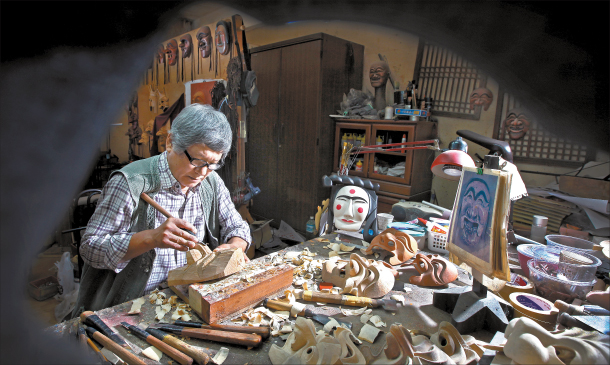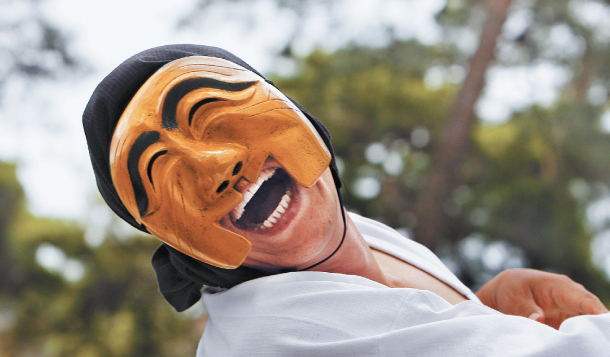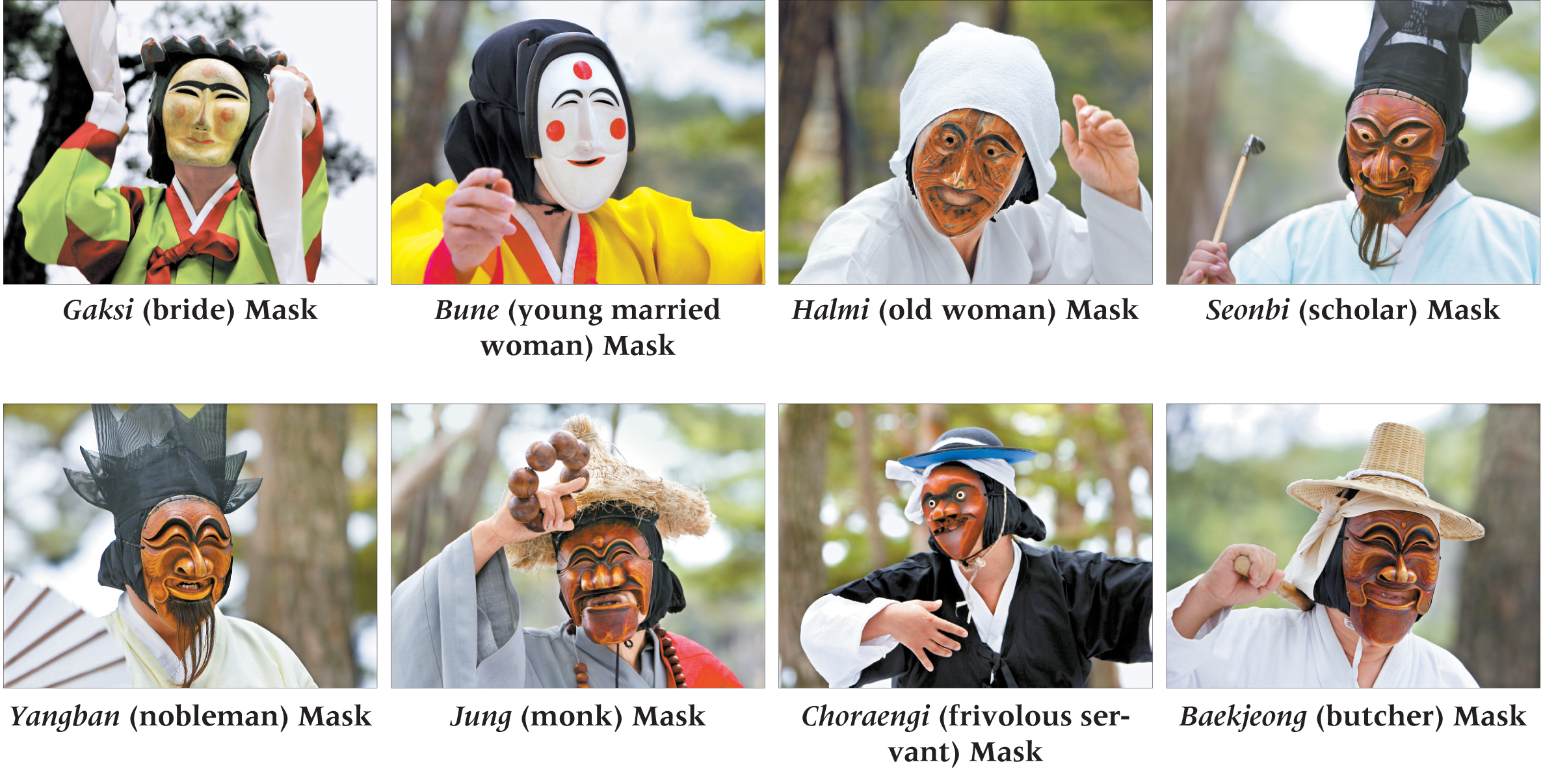[ZOOM KOREA] Hahoe mask maker tells the story of Korea

Master Kim Dong-pyo, who is also the director of the Hahoe Mask Museum, sits at his workshop situated inside Hahoe Village. [PARK SANG-MOON]
The so-called Hahoe masks are said to embody the generosity of the rock-carved Buddha Triad in Seosan, South Chungcheong, the history of the Korean peninsula carved onto maksae tiles during the Silla Dynasty (57 B.C.-A.D. 935) and the wisdom of the Gilt-bronze Maitreya in Meditation from the Three Kingdoms Period (57 B.C.-A.D. 668).
They were originally used during a special exorcism rite dubbed as Byeolsingut, in which Hahoe villagers would pray to their guardian deity while wearing the wooden masks to wish for peace and a bountiful harvest. Within the oldest Hahoe mask, designated as National Treasure No. 121, is the sad story of Heo Doryeong, or young master Heo, a tale that goes back centuries to the mid-Goryeo Dynasty (918-1392).
When the Heo families occupied Hahoe Village, the village was struck with a series of mysterious accidents. One day, when the young master Heo was asleep, the mountain god told him in his dreams that he can rid the village of its troubles if he carved a mask and danced while wearing that mask. But, added the mountain god, he must make the mask without anyone knowing or seeing what he was doing.
To save his sorrow-stricken village, the young master Heo ventured to a far corner of the village, built himself a small hut and got right to work. Everything was going according to plan until one day, when a young maiden who had fallen in love with Heo journeyed to his hut to see him. He died on the spot. The young maiden ended her life in guilt and sorrow soon after. The villagers built a seonangdang (shrine to a village deity) in the hut’s place to appease the maiden’s soul, and performed ancestral rites in her honor every first month of the lunar year. This is said to be the root of the Hahoe Byeolsingut.

Left: Queen Elizabeth II visits Hahoe Village in 1999, and shakes hands with director Kim, who took part in a play wearing a gaksi mask that he made. Right: Visitors look at masks on display at the Hahoe Mask Museum, which sits near the entrance of Hahoe Village. [PARK SANG-MOON]
Master Kim Dong-pyo is not only Korea’s leading Hahoe Mask master, but also the director of the Hahoe Mask Museum, which is situated near the entrance of the Hahoe Village. Born in 1952 in Gudam, Andong, Kim acquired the nickname Kim Dae-mok (meaning wood grand master Kim) at a young age, as he showed a talent for cutting and carving wood like nobody else in the town. After he finished his high school education in nearby Daegu, he made his way to Seoul to attend Hanyang Wood Carving Institute, where he truly started to dive into the world of carpentry.
Kim’s first experience with the Hahoe mask was in 1978, when he opened up a small workshop in Cheonho-dong, eastern Seoul. One day, a customer came to him with a post stamp with a Hahoe mask drawn on it and asked if he could make a mask that looked the same as the stamp. Without hesitation, he said yes, and immediately got to work. Pretty soon, he found that the work was much easier said than done.
Ever since, he has worked on Hahoe masks, and he tried to make ends meet by supplying his masks to department stores, only to find that it wasn’t enough to make a living on. Rather than getting discouraged, he made his way back to his hometown to keep his oath of maintaining the Hahoe mask tradition. In 1980, he returned to focus on nothing but the art of making Hahoe masks. But the more detailed and intricate he got with his works, the larger his debt grew, as his attention to each and every detail took him a long time to complete a piece of work.

Imae (scholar’s servant) Mask
After he got married, Kim had to think of a way to start making a profit, for the sake of his marriage. So he thought of mask necklaces. Back then, Hahoe Village had no unique souvenir item to sell to the tourists. Kim’s idea was spot on; guests would swarm in from all over the country just to get their hands on his beautiful mask necklace.
In a corner of his old workshop in Hahoe Village, there’s a small board where he displays nine Hahoe masks that he made. Seeing as people enjoyed them a lot more than he expected, a new goal was planted in his heart: to build a Hahoe Mask Museum in Hahoe Village. His dream later came true thanks to the money he made from selling the necklaces.

Masks made by Master Kim Dong-pyo that are used during the Hahoe Byeolsingut tallori (mask performance)
Kim says that Hahoe masks are his life. His masks have been sent to leaders worldwide, such as Queen Elizabeth II who visited Hahoe Village in 1999 and President George Bush of the United States. Hahoe masks indeed hold the heart of Korean tradition, but it is Master Kim who makes sure that the tradition keeps living and breathing on Korean soil.
BY PARK SANG-MOON [moonpark@joongang.co.kr]










with the Korea JoongAng Daily
To write comments, please log in to one of the accounts.
Standards Board Policy (0/250자)